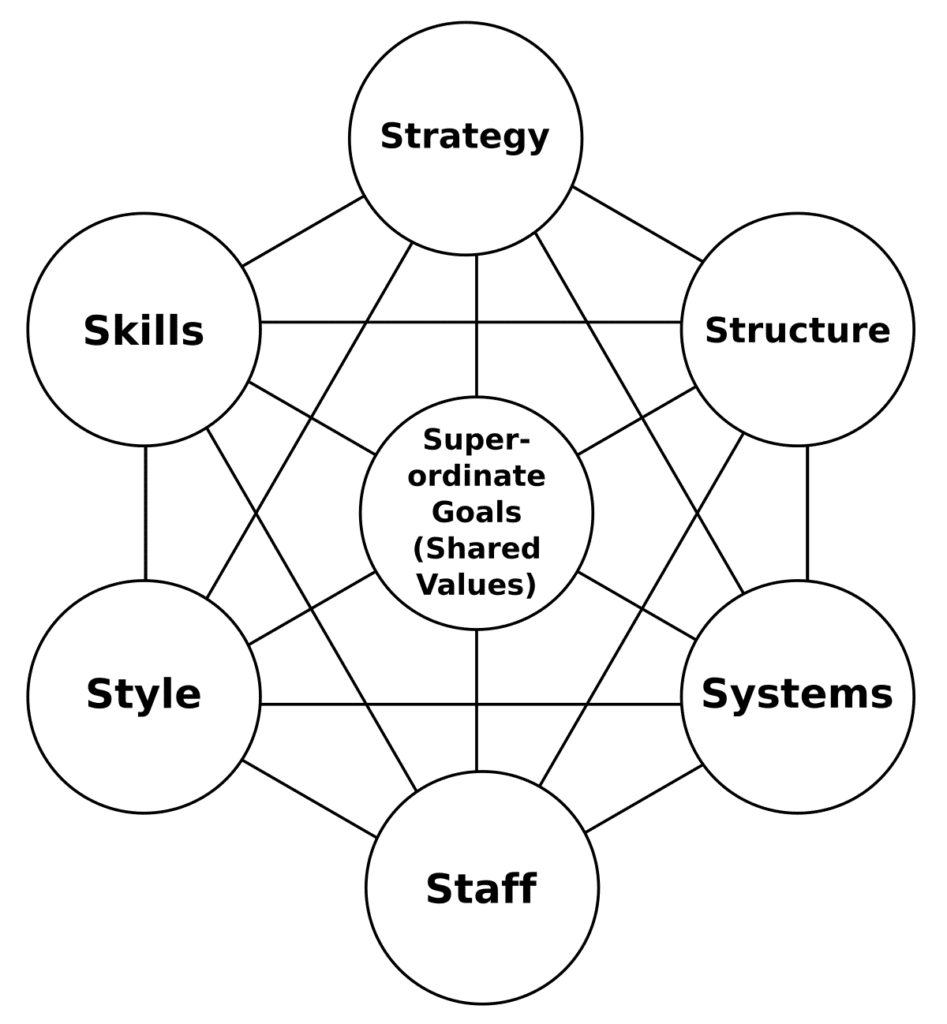Unveiling the Power of Shared Values in Business Success
The McKinsey 7S Framework is a powerful tool for organisational assessment and alignment, developed by Tom Peters and Robert Waterman during their tenure at McKinsey & Company. The framework comprises seven integral components: Strategy, Structure, Systems, Staff, Skills, Style, and Shared Values, each equally significant and interdependent.
In this blog, I want to focus on Shared Values, an indispensable component, and the core of this model, responsible for shaping the corporate culture and identity of an organisation.
When you see a typical diagram of the 7S framework, you’ll see that ‘Shared Values’ sits in the centre, influencing all of the other six components. Sitting at the core of the organisation, they represent its essential and enduring principles and beliefs, often reflected in its corporate culture and ethical standards.

These values serve as the foundation upon which the organisation’s identity is formed and contribute to defining its overall purpose. They embody the fundamental beliefs, guiding principles, and ethical considerations that direct the actions of the organisation and the people within it. The concept of shared values is not limited to the internal organisation but extends outside of it to the stakeholders, thereby helping to align the organisational goals with the expectations of stakeholders.
Strong shared values will often contribute to not only acting as a foundation for relationships with external stakeholders but will also solidify and strengthen these relationships as the shared values are constantly practiced and demonstrated.
Ensuring that stakeholders understand the mission of the business is crucial for the smooth running of any organisation. Shared values play a significant role in this aspect. A clear articulation of the shared values of the organisation gives stakeholders a sense of its broader purpose beyond just being profit-making. It helps to create a mutual understanding and builds a relationship of trust between the organisation and its stakeholders.
For stakeholders to comprehend the organisation’s mission, shared values need to be effectively communicated and consistently demonstrated. Every action, decision, and communication from the organisation should reflect these values, thereby enabling stakeholders to perceive the organisation’s mission in practice, not just in theory. Communication tools such as company websites, annual reports, corporate events, and social media can be used to consistently convey the shared values and mission to the stakeholders.
What’s more, shared values provide a lens through which stakeholders can evaluate the organisation’s actions and decisions. If the actions align with the stated shared values, it reinforces trust in the organisation. However, discrepancies between the shared values and the organisation’s actions can lead to skepticism and mistrust, thus undermining the stakeholders’ understanding of the organisation’s mission.
Training and development programs for employees can also be instrumental in embodying these shared values within the organisation, consequently ensuring the consistent demonstration of these values in dealings with stakeholders. Similarly, recognising and rewarding behaviors that reflect shared values can encourage their widespread adoption within the organisation.







